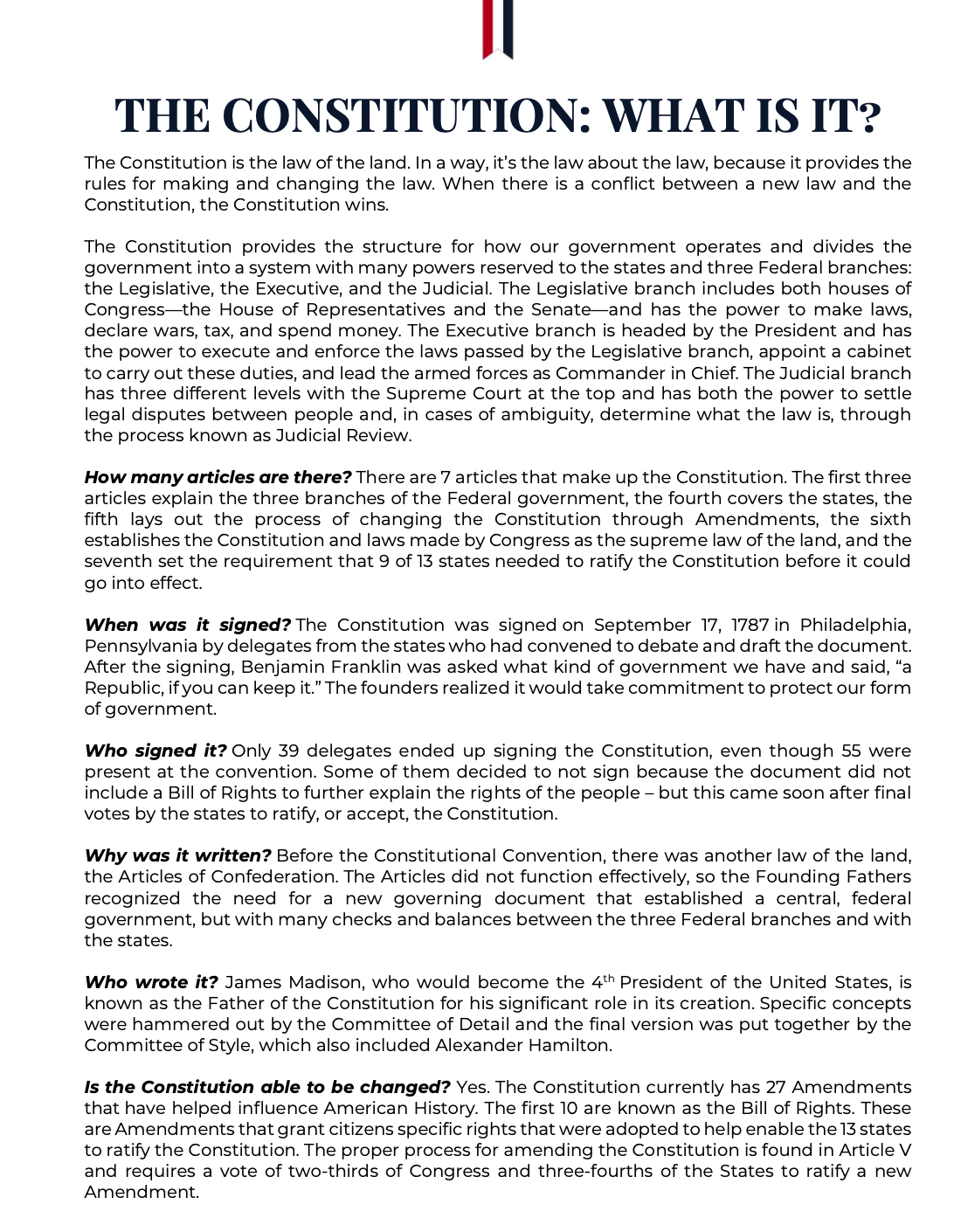The Constitution: What is it?
The Constitution is the law of the land. In a way, it’s the law about the law, because it provides the rules for making and changing the law. When there is a conflict between a new law and the Constitution, the Constitution wins.
The Constitution provides the structure for how our government operates and divides the government into a system with many powers reserved to the states and three Federal branches: the Legislative, the Executive, and the Judicial. The Legislative branch includes both houses of Congress—the House of Representatives and the Senate—and has the power to make laws, declare wars, tax, and spend money. The Executive branch is headed by the President and has the power to execute and enforce the laws passed by the Legislative branch, appoint a cabinet to carry out these duties, and lead the armed forces as Commander in Chief. The Judicial branch has three different levels with the Supreme Court at the top and has both the power to settle legal disputes between people and, in cases of ambiguity, determine what the law is, through the process known as Judicial Review.
How many articles are there? There are 7 articles that make up the Constitution. The first three articles explain the three branches of the Federal government, the fourth covers the states, the fifth lays out the process of changing the Constitution through Amendments, the sixth establishes the Constitution and laws made by Congress as the supreme law of the land, and the seventh set the requirement that 9 of 13 states needed to ratify the Constitution before it could go into effect.
When was it signed? The Constitution was signed on September 17, 1787 in Philadelphia, Pennsylvania by delegates from the states who had convened to debate and draft the document.
After the signing, Benjamin Franklin was asked what kind of government we have and said, “a Republic, if you can keep it.” The founders realized it would take commitment to protect our form of government.
Who signed it? Only 39 delegates ended up signing the Constitution, even though 55 were present at the convention. Some of them decided to not sign because the document did not include a Bill of Rights to further explain the rights of the people – but this came soon after final votes by the states to ratify, or accept, the Constitution.
Why was it written? Before the Constitutional Convention, there was another law of the land, the Articles of Confederation. The Articles did not function effectively, so the Founding Fathers recognized the need for a new governing document that established a central, federal government, but with many checks and balances between the three Federal branches and with the states.
Who wrote it? James Madison, who would become the 4th President of the United States, is known as the Father of the Constitution for his significant role in its creation. Specific concepts were hammered out by the Committee of Detail and the final version was put together by the Committee of Style, which also included Alexander Hamilton.
Is the Constitution able to be changed? Yes. The Constitution currently has 27 Amendments that have helped influence American History. The first 10 are known as the Bill of Rights. These are Amendments that grant citizens specific rights that were adopted to help enable the 13 states to ratify the Constitution. The proper process for amending the Constitution is found in Article V and requires a vote of two-thirds of Congress and three-fourths of the States to ratify a new Amendment.
